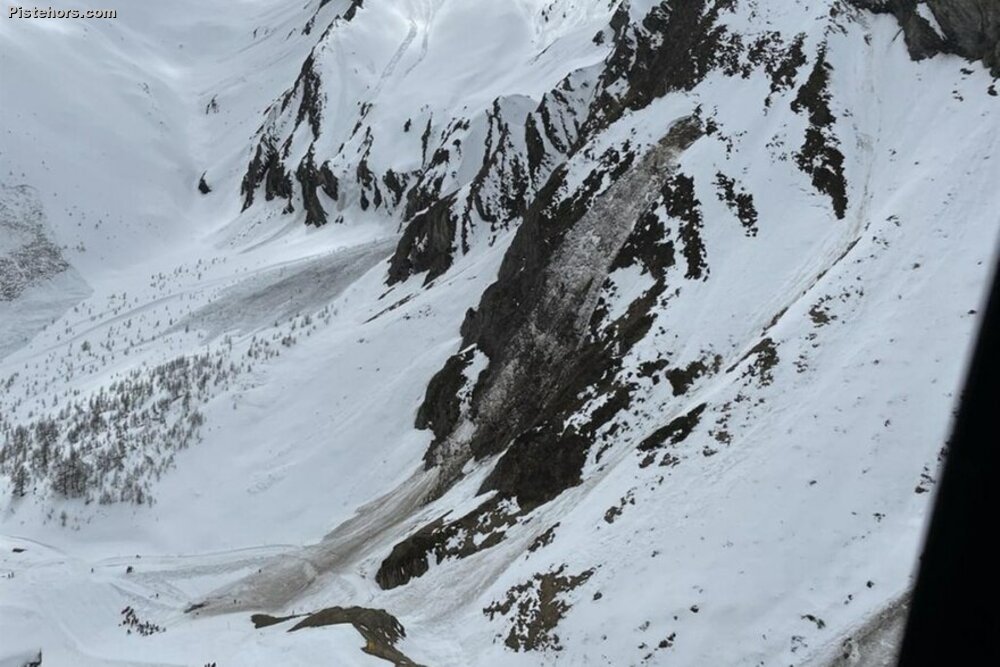Twenty-one people were killed in avalanches in Switzerland last season in 16 incidents. A total of 137 incidents were reported to the SLF (Institute for Snow and Avalanche Research in Davos) involving 222 people of which 34 were buried. This is above the 20 year average of 17 fatalities.
11 of the incidents were ski touring, 4 off piste skiing and one on a resort piste but apparently reserved for piste basher use (see photo). 11 incidents occurred at risk 3 on the 5 point scale, 3 at risk 2 and 1 at risk 4 and 1 where no avalanche bulletin was issued (out of season). The off piste incidents were at risk 3 and 4.
9 incidents were on north sector slopes, 5 on south sector slopes and the remainder on east facing slopes. All fatal incidents were above 2000 meters altitude but this was certainly related to the lack of snow lower down.
6 of the incidents occured during the winter months (Dec to Feb: 3 in Dec, 2 in Jan and 1 in Feb), 10 in the spring (6 in Mar, 2 in April, 2 in May. This is quite an unusual distribution. The majority of incidents are typically in January and February.

The one on piste fatal incident was in Samnaun on the 29th April 2023. Two female skiers were caught by a wet snow slide around 13h00 in Val Musauna when taking a small variant to the main piste normally used by piste bashers. The victim was found after some delay by an avalanche rescue dog. The slide was caused by rapidly warming temperatures at the end of the month.
The winter of 2022/23 was significantly warmer and drier than normal. There was snow cover above 2000m from the beginning of November but there was only intermittent snow cover lower down during the winter, snow below 1000 m was rare. The mean snow depths were well below average over the entire winter. Between mid-February and mid-March, snow depths in the Swiss Alps were lower than at any time since measurements began.
There were periods of increased avalanche activity in the second half of December and in the first half of January and February. However, due to the poor snow conditions and the infrequent snowfall, avalanche activity was relatively low from January to early March. The widespread abundant March precipitation in combination with a weak old snowpack caused a critical avalanche situation and a number of avalanche accidents. The March snow also ensured that snow conditions at high altitudes improved significantly in the north, with snow depths approaching the average by late March.
Compared to the average of the last ten years, by the end of March danger level 2 (moderate) was forecast somewhat more frequently, danger level 3 (considerable) around the same, and danger levels 1 (low) and 4 (high) somewhat less frequently. Danger level 5 (very high) was not used.